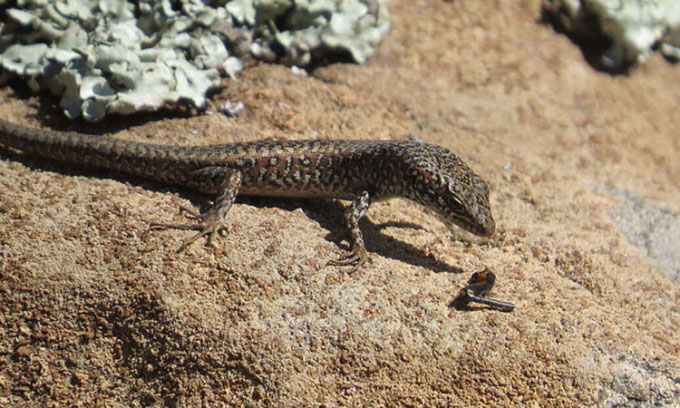While in the womb, the spotted skink can change sex and is born with a male body due to temperature.
The spotted skink (Carinascincus ocellatus), a species endemic to Tasmania, Australia, can change from female to male before birth. This is the first known instance of a non-egg-laying animal exhibiting this ability. The new study was conducted by a team of experts at the University of Tasmania and published in the journal Proceedings of the Royal Society B on June 1.

The spotted skink, a species endemic to Tasmania. (Photo: JMsayers)
According to the new research, spotted skinks can sometimes be born anatomically male but genetically female. Scientists indicate that the reason for this change is temperature.
In humans, sex is determined by a pair of inherited chromosomes, but this is not always the case in reptiles. For some species, sex depends on the temperature at which the eggs are incubated. For others, it may depend on both factors, such as in the case of the Pogona vitticeps. Typically, sex is determined genetically, but at temperatures above 32 degrees Celsius, genetically male individuals can develop as females with full functionality.
This phenomenon is known as “sex reversal” and occurs when the genes responsible for sex determination are also sensitive to temperature. Previously, sex reversal had only been documented in egg-laying animals, including fish, amphibians, and reptiles.
The spotted skink gives birth instead of laying eggs. In nature, the sex ratio of the population is influenced by temperature. The number of females increases in warmer conditions, while the number of males rises in cooler conditions. In this new study, experts at the University of Tasmania investigated whether these differences in sex ratios were determined by temperature-induced sex reversal.
The research team trapped 100 pregnant females from different altitudes and cared for them at various temperatures in the laboratory. They then divided them into 5 groups, each consisting of 20 individuals. In one experiment, two groups were exposed to heat lamps for 4 or 10 hours a day, with temperatures ranging from 10 degrees Celsius when the lamp was off to 20-37 degrees Celsius when it was on. In another experiment, the remaining groups were maintained at constant temperatures of 33 degrees Celsius, 29.5 degrees Celsius, or 26 degrees Celsius during the day and 10 degrees Celsius at night.
When 423 baby skinks were born, the experts sequenced the DNA from the tail samples of each individual to determine sex genetically, while also examining reproductive organs to ascertain anatomical sex.
All anatomically female individuals had two X chromosomes, meaning they were also female genetically. There was no sex reversal from male to female. However, 31 individuals, equivalent to 7%, exhibited male reproductive organs and female chromosomes (XX).
These XX males appeared in both experiments and were more common among females from lower altitudes and when temperatures were restricted—specifically, when the heat lamp was only on for 4 hours or when temperatures were controlled at 26 degrees Celsius.
This research helps explain the skewed female-biased sex ratio observed in spotted skink populations under warm conditions. If XX males mate with XX females, all offspring will be female genetically, as the XX males lack a Y chromosome, leading to a higher number of females in the second generation, explained expert Benjamin Geffroy from the French Marine Exploitation Institute.


















































